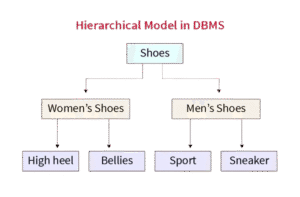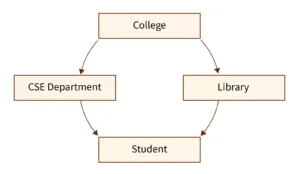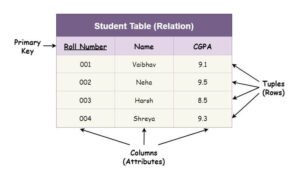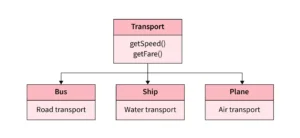Types of Data Models in DBMS
A data model defines how data is organized, stored, and related in a database system. It provides the structure that determines how data is connected, retrieved, and manipulated. Over time, different types of data models have emerged to support various use cases and technologies. The four major types are:
Hierarchical, Network, Relational, and Object-Oriented.
1. Hierarchical Data Model
- The Hierarchical Model organizes data in a tree-like structure, where each record has a single parent and possibly many children.
- Relationships follow a one-to-many pattern, like a file system with folders and subfolders.
- Data is accessed through navigating from parent to child using predefined paths.

Limitations: Rigid structure, difficult to rearrange, and poor support for complex relationships.
2. Network Data Model
- The Network Model allows a many-to-many relationship using a graph-like structure where records are nodes connected by links.
- It uses pointers to represent relationships between data elements.
- Data can be accessed through multiple paths, offering more flexibility than the hierarchical model.

Limitations: Complex to design and maintain; requires knowledge of pointers and access paths.
3. Relational Data Model
- The Relational Model represents data in tables (relations) made up of rows (records) and columns (attributes).
- It is based on set theory and predicate logic, making it simple and mathematically sound.
- Relationships between tables are defined using keys (primary and foreign keys), and data is accessed using SQL.

Strengths: High flexibility, easy data access, normalization, and industry-wide adoption.
4. Object-Oriented Data Model
- Combines the principles of object-oriented programming with database management.
- Data is stored in the form of objects, which include both state (attributes) and behavior (methods).
- Supports complex data types, inheritance, and encapsulation.

Example: In a university database, a Student object can have properties like name, rollNumber, and methods like calculateGPA().
Use Cases: Ideal for applications requiring multimedia, CAD, or complex data relationships.
Conclusion
Each data model has its own purpose, strengths, and limitations. While hierarchical and network models laid the foundation in early systems, the relational model became the standard for its simplicity and power. Meanwhile, object-oriented models are useful in domains where data and operations need to be tightly coupled. Understanding these models helps in selecting the right structure based on the application’s needs.